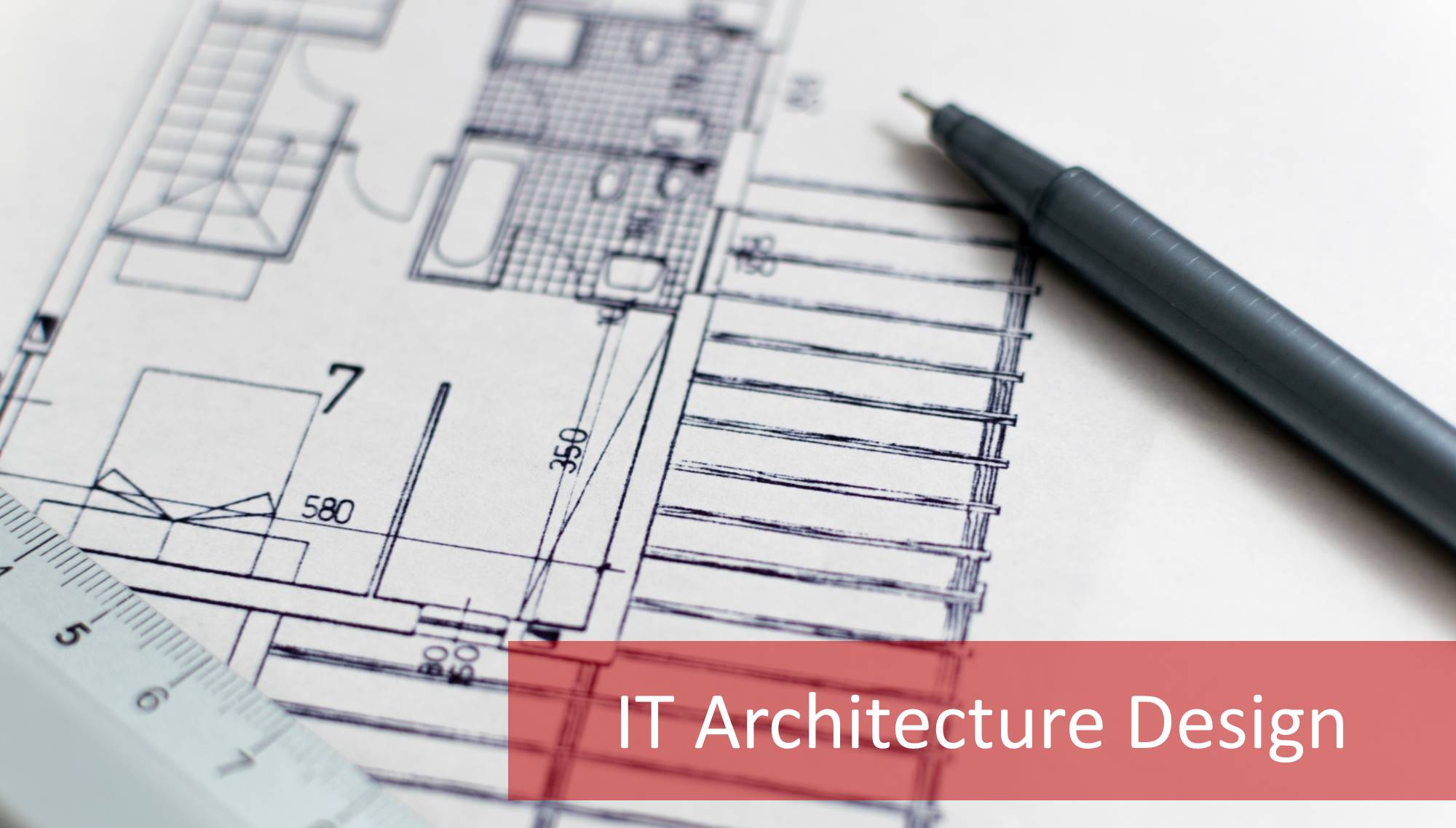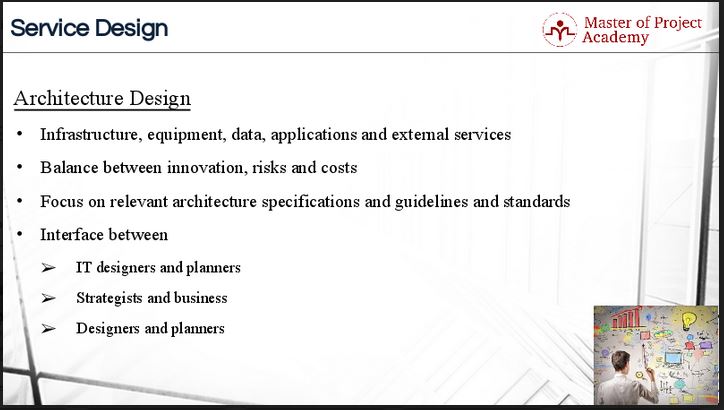IT Architecture Design is one of the important aspects of Service Design as explained in ITIL training. The purpose of IT architecture is to build a solid foundation on which new services or updates of existing services can be built – similar to building a solid foundation for a new building. The work of architectural design needs to assess and reconcile many types of needs, some of which may be in conflict with one other.
The work of architectural design needs to assess and reconcile many types of needs, some of which may be in conflict with one other. ITIL course specifies that these include infrastructure, equipment, data, application, and external services. In order to provide a new service or update an existing service, IT infrastructure of the service provider should support the change. Similarly, equipment, data, other running applications that will be interacting with the new service need to be working properly. When designing new services or updating existing services during the service design stage of the ITIL lifecycle for services, these should be considered during architectural design.

The scope of IT architecture
There are several issues that IT service managers and designers need to reconcile when building an IT architectural set-up for an IT service
- Overall macroscopic system structure: these include the higher level aspects of IT service design
- The critical aspects that have a high impact on the service and its stakeholders
- Aspects that seem hard to change. This is especially important when developing improvements on existing service. Certain aspects of a service are hard to change once it has been implemented and service designers must work these “first-time-right” aspects of building a service into the IT architectural design.
The benefits of IT Architecture
The IT architecture gives a basis for the analysis of service behavior before the service has been built. It allows the team to verify that the service will fulfill all the stakeholders’ needs. Also, it provides a basis for re-use of elements and decisions. This saves costs when updates to existing services or new services with many commonalities with existing services are designed in the future. IT architecture
IT architecture supports early design decisions that impact on the ITIL Service Transition and ITIL Service Operation stages of the ITIL lifecycle. Getting the first high-impact decisions right avoid additional unbudgeted expenses and ensures that the project will be completed on time. IT architecture facilitates the communication between stakeholders in order to deliver a system that fulfills their needs. Stakeholders need to understand the technical consequences of their needs. This way, the correct design decisions can be made before the system is implemented and while adaptation is still possible. Furthermore, IT architecture helps with risk management and cost reduction.

Core IT Architecture activities
As seen in online ITIL courses, there are some key activities that are associated with the process of IT architectural design
Architectural Analysis
This is the process of understanding the environment in which will operate and the requirements that are needed to allow the service to run under these conditions. Examples are functional requirements, quality requirements, maintainability and transferability, and business requirements.
Architectural Synthesis
This is the process of creating an architecture. The requirements determined during the analysis phase, the current state of the design and the results from evaluation activities are used to create and improve the design.
Architecture Evaluation
IT architecture evaluation is the process of evaluating how well a current design delivers on the requirements. When an IT architect considers a design decision, designed some portion of the service or after the final design, an evaluation can be completed.
Architecture Evolution
This is the process of maintaining and adapting an existing software architecture to meet changes in requirements and in its environment. As IT architectural design provides a fundamental structure of a software system, its evolution and maintenance would necessarily impact its fundamental structure. As such, IT architecture evolution is concerned with adding new functionality as well as maintaining existing functionality and system behavior. This activity also forms part of the ITIL continual service improvement stage of the ITIL lifecycle.
IT Architecture design and innovation
When designing new services or updating existing services, these should be considered during the IT architecture design phase. There must be a balance between innovation, risks, and costs. Every organization tries to innovate in order to attract new customers or retain its existing customer base. If they cannot adapt to change, they know that they will lose their business over time.
However, there is a balance that needs to be in place between innovation, risks, and costs. If the company invests a lot in order to be innovative on a project that your customers will not be interested in, this will not bring enough revenue in turn. These kinds of cases can cause lots of loss of business for the company.

The Standards
Focus on relevant IT architecture specifications, guidelines and standards need to be considered during ITIL service design phase. There are common practices to adopt a technology or service in an organization. These common practices or guidelines can be either globally appreciated and applied standards or the company’s own standards. During the design of new services, these IT architecture guidelines and standards need to be considered in order to be consistent with the general and common approach.
The role of IT architecture in a business
The IT architecture design must be an interface between IT designers and planners, business strategist, designers, and planners. The IT architecture design of a service provider organization actually draws the line in an organization about what can be done or cannot be done from IT point of view.
Therefore, as you can also get a brief information through an online free ITIL training, the IT designers, planners, strategists and business partners can implement their plans or objectives under the boundaries drawn the IT architecture of the company. For instance, if the business is requiring a new service that cannot be supported by the IT architecture, this will be impossible to design unless changes to the IT architecture are planned and implemented in its IT architecture of the service provider.
